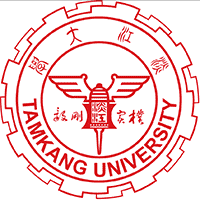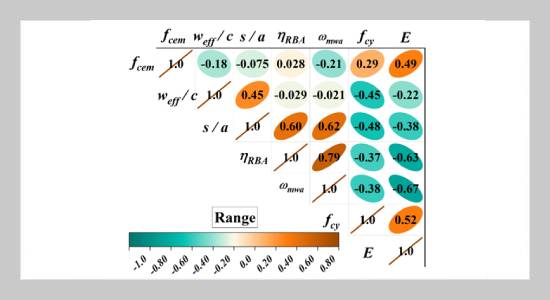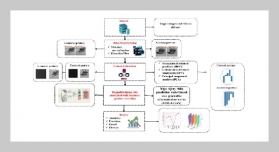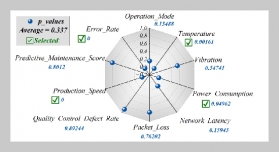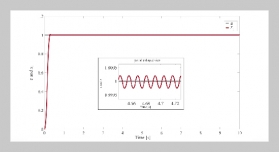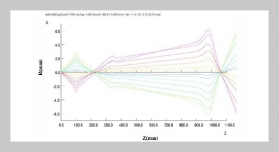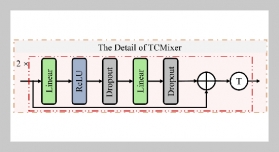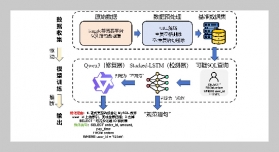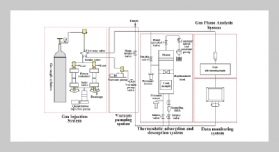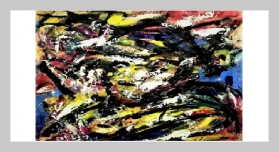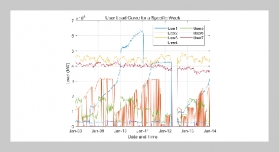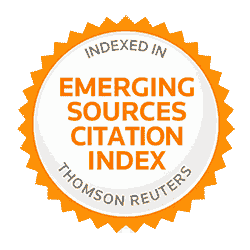- [1] M. Walczak, (2021)“RopesandKnots: Architectural Emulation in Fifteenth-and Early Sixteenth-Century Central Europe and the Origins of Architecture" source: notes in the history of art 40: 133–142. DOI: https: //doi.org/10.1086/714711.
- [2] Y. Cheng and M. Tan, (2018) “The quantitative research of landscape color: A study of Ming Dynasty City Wall in Nanjing" Color Research & Application 43: 436–448. DOI: https: //doi.org/10.1002/col.22203.
- [3] S. A. Hoor and M. Esmaeili-Falak, (2024) “Innovative Approaches for Mitigating Soil Liquefaction: A State-of the-Art Review of Techniques and Bibliometric Analysis" Indian Geotechnical Journal: 1–28. DOI: https: //doi.org/10.1007/s40098-024-01120-3.
- [4] J. Xiao, J. Ying, V. W. Y. Tam, and I. R. Gilbert, (2014) “Test and prediction of chloride diffusion in recycled aggregate concrete" Science China Technological Sciences 57: 2357–2370. DOI: https: //doi.org/10.1007/s11431-014-5700-4.
- [5] R. S. Benemaran, M. Esmaeili-Falak, and M. S. Kord lar, (2024) “Improvement of recycled aggregate concrete using glass fiber and silica fume" Multiscale and Multidisciplinary Modeling, Experiments and Design 7: 1895–1914. DOI: https: //doi.org/10.1007/s41939-023-00313-2.
- [6] W. Liu, S. Yan, and S. He, (2018) “Landslide damage incurred to buildings: a case study of Shenzhen landslide" Engineering geology 247: 69–83. DOI: https: //doi.org/10.1016/j.enggeo.2018.10.025.
- [7] C. L. Wong, K. H. Mo, S. P. Yap, U. J. Alengaram, and T.-C. Ling, (2018) “Potential use of brick waste as alternate concrete-making materials: A review" Journal of cleaner production 195: 226–239. DOI: https: //doi.org/10.1016/j.jclepro.2018.05.193.
- [8] L. Zhu and Z. Zhu, (2020) “Reuse of clay brick waste in mortar and concrete" Advances in Materials Science and Engineering 2020: 6326178. DOI: https://doi.org/10.1155/2020/6326178.
- [9] X. Lu, X. Yin, and H. Jiang, (2013) “Shaking table scaled model test on a high-rise building with CFT frame and composite core wall" European journal of environ mental and civil engineering 17: 616–634. DOI: https: //doi.org/10.1080/19648189.2013.805435.
- [10] A. Hasan, M. G. Kibria, and F. M. M. Hasan, (2019) “Effects of incorporating recycled brick and stone aggregate as replacement of natural stone aggregate in concrete" Int. J. Eng. Technol. Innov 9: 38–48.
- [11] Z. He, A. Shen, H. Wu, W. Wang, L. Wang, and Y. Guo, (2022) “Properties and mechanisms of brick-concrete re cycled aggregate strengthened by compound modification treatment" Construction and Building Materials 315: 125678. DOI: https: //doi.org/10.1016/j.conbuildmat.2021.125678.
- [12] S. T. Zhang, (2017) “Experimental study of recycled brick aggregate concrete-filled steel tube columns" Liaoning Univ. Technol.
- [13] A. A. Aliabdo, A.-E. M. Abd-Elmoaty, and H. H. Hassan, (2014) “Utilization of crushed clay brick in concrete industry" Alexandria Engineering Journal 53: 151 168. DOI: https: //doi.org/10.1016/j.aej.2013.12.003.
- [14] C. F. Yuan, S. Li, L. Zeng, and Z. Chen, (2018) “Mechanical properties of brick and concrete mixed recycled coarse aggregate concrete" Bulletin of the Chinese Ceramic Society 37: 398–402.
- [15] M. A. Rashid, M. A. Salam, S. K. Shill, and M. K. Hasan, (2012) “Effect of replacing natural coarse aggregate by brick aggregate on the properties of concrete":
- [16] C. Zheng, C. Lou, G. Du, X. Li, Z. Liu, and L. Li, (2018) “Mechanical properties of recycled concrete with demolished waste concrete aggregate and clay brick aggregate" Results in Physics 9: 1317–1322. DOI: https: //doi.org/10.1016/j.rinp.2018.04.061.
- [17] I. F. S. D. Bosque, W. Zhu, T. Howind, A. Matías, M. I. S. D. Rojas, and C. Medina, (2017) “Properties of interfacial transition zones (ITZs) in concrete containing recycled mixed aggregate" Cement and Concrete Composites 81: 25–34. DOI: https: //doi.org/10.1016/j.cemconcomp.2017.04.011.
- [18] H. Alielahi, A. Tavasoli, and A. Derakhshan, (2024) “Exploring the efficacy of aluminum foam as an innovative solution to mitigate surface faulting effects on shallow foundations: a numerical investigation" Geotechnical and Geological Engineering 42: 2475–2493. DOI: https: //doi.org/10.1007/s10706-023-02686-0.
- [19] B. M. Yaychi and M. Esmaeili-Falak, (2024) “Estimating axial bearing capacity of driven piles using tuned random forest frameworks" Geotechnical and Geological Engineering 42: 7813–7834. DOI: https: //doi.org/10.1007/s10706-024-02952-9.
- [20] X. Sun, X. Dong, W. Teng, L. Wang, and E. Has sankhani, (2024) “Creation of regression analysis for estimation of carbon fiber reinforced polymer-steel bond strength" Steel and Composite Structures 51: 509 527. DOI: https: //doi.org/10.12989/scs.2024.51.5.509.
- [21] Y. Zhu, L. Huang, Z. Zhang, and B. Bayrami, (2022) “Estimation of splitting tensile strength of modified recycled aggregate concrete using hybrid algorithms" Steel and Composite Structures, An International Journal 44: 389–406.
- [22] Y. Dawei, Z. Bing, G. Bingbing, G. Xibo, and B. Razzaghzadeh, (2023) “Predicting the CPT-based pile set-up parameters using HHO-RF and PSO-RF hybrid models" Structural Engineering and Mechanics, An Int’l Journal 86: 673–686.
- [23] R. S. Benemaran, (2023) “Application of extreme gradient boosting method for evaluating the properties of episodic failure of borehole breakout" Geoenergy Science and Engineering 226: 211837. DOI: https: //doi.org/10.1016/j.geoen.2023.211837.
- [24] D. Li, X. Zhang, Q. Kang, and E. Tavakkol, (2023) “Estimation of unconfined compressive strength of marine clay modified with recycled tiles using hybridized extreme gradient boosting method" Construction and Building Materials 393: 131992. DOI: https: //doi.org/10.1016/j.conbuildmat.2023.131992.
- [25] M. Esmaeili-Falak, H. Katebi, M. Vadiati, and J. Adamowski, (2019) “Predicting triaxial compressive strength and Young’s modulus of frozen sand using artificial intelligence methods" Journal of Cold Regions Engineering 33: 04019007. DOI: https: //doi.org/10.1061/(ASCE)CR.1943-5495.0000188.
- [26] R. Liang and B. Bayrami, (2023) “Estimation of frost durability of recycled aggregate concrete by hybridized Random Forests algorithms" Steel and Composite Structures 49: 91–107. DOI: https://doi.org/10.12989/scs.2023.49.1.091.
- [27] M. Esmaeili-Falak and R. S. Benemaran, (2024) “Ensemble extreme gradient boosting based models to predict the bearing capacity of micropile group" Applied Ocean Research 151: 104149. DOI: https://doi.org/10.1016/j.apor.2024.104149.
- [28] K. Zhang, Y. Zhang, and B. Razzaghzadeh, (2024) “Application of the optimal fuzzy-based system on bearing capacity of concrete pile" Steel and Composite Structures 51: 25–41. DOI: https: //doi.org/10.12989/scs.2024.51.1.025.
- [29] H. Kou, J. Quan, S. Guo, and E. Hassankhani, (2024) “Light and normal weight concretes shear strength estimation using tree-based tunned frameworks" Construction and Building Materials 452: 138955. DOI: https: //doi.org/10.1016/j.conbuildmat.2024.138955.
- [30] M. Esmaeili-Falak and R. S. Benemaran, (2024) “Ap plication of optimization-based regression analysis for evaluation of frost durability of recycled aggregate concrete" Structural Concrete 25: 716–737. DOI: https: //doi.org/10.1002/suco.202300566.
- [31] T. Nian, P. Li, X. Wei, P. Wang, H. Li, and R. Guo, (2018) “The effect of freeze-thaw cycles on durability properties of SBS-modified bitumen" Construction and Building Materials 187: 77–88. DOI: https://doi.org/10.1016/j.conbuildmat.2018.07.171.
- [32] T. Gómez-Navarro and D. Ribó-Pérez, (2018) “Assessing the obstacles to the participation of renewable energy sources in the electricity market of Colombia" Renew able and Sustainable Energy Reviews 90: 131–141. DOI: https: //doi.org/10.1016/j.rser.2018.03.015.
- [33] S. M. S. Kazmi, M. J. Munir, Y.-F. Wu, X. Lin, and S. Z. Ashiq, (2023) “Development of unified elastic mod ulus model of natural and recycled aggregate concrete for structural applications" Case Studies in Construction Materials 18: e01873. DOI: https: //doi.org/10.1016/j.cscm.2023.e01873.
- [34] M. Hosseinzadeh, M. Dehestani, and A. Hosseinzadeh, (2023) “Prediction of mechanical properties of recycled aggregate fly ash concrete employing machine learning algorithms" Journal of Building Engineering 76: 107006. DOI: https: //doi.org/10.1016/j.jobe.2023.107006.
- [35] J. Yan, J. Su, J. Xu, L. Lin, and Y. Yu, (2024) “Ensemble machine learning models for compressive strength and elastic modulus of recycled brick aggregate concrete" Materials Today Communications 41: 110635. DOI: https: //doi.org/10.1016/j.mtcomm.2024.110635.
- [36] T. Han, A. Siddique, K. Khayat, J. Huang, and A. Ku mar, (2020) “An ensemble machine learning approach for prediction and optimization of modulus of elasticity of re cycled aggregate concrete" Construction and Building Materials 244: 118271. DOI: https: //doi.org/10.1016/j.conbuildmat.2020.118271.
- [37] A. Khademi, K. Behfarnia, T. K. Šipoš, and I. Mil iˇcevi´c, (2021) “The use of machine learning models in estimating the compressive strength of recycled brick aggregate concrete" Computational Engineering and Physical Modeling 4: 1–25. DOI: https: //doi.org/10.22115/cepm.2021.297016.1181.
- [38] C. Liu, Y. Wang, X. Gao, G. Zhang, H. Liu, C. Ma, J. Sun, and J. Lai, (2022) “Review of the strengthening methods and mechanical properties of recycled aggregate concrete (RAC)" Crystals 12: 1321. DOI: https: //doi.org/10.3390/cryst12091321.
- [39] P. B. Cachim, (2009) “Mechanical properties of brick aggregate concrete" Construction and Building Mate rials 23: 1292–1297. DOI: https: //doi.org/10.1016/j.conbuildmat.2008.07.023.
- [40] L. Zheng, H. Wu, H. Zhang, H. Duan, J. Wang, W. Jiang, B. Dong, G. Liu, J. Zuo, and Q. Song, (2017) “Characterizing the generation and flows of construction and demolition waste in China" Construction and Building materials 136: 405–413. DOI: https://doi.org/10.1016/j.conbuildmat.2017.01.055.
- [41] M. A. Mansur, T. H. Wee, and S. C. Lee, (1999) “Crushed bricks as coarse aggregate for concrete" Materials Journal 96: 478–484.
- [42] S. C. Paul, A. J. Babafemi, V. Anggraini, and M. M. Rahman, (2018) “RETRACTED: Properties of Normal and Recycled Brick Aggregates for Production of Medium Range (25–30 MPa) Structural Strength Concrete" Buildings 8: 72. DOI: https: //doi.org/10.3390/buildings8050072.
- [43] J. R. Quinlan. C4. 5: programs for machine learning. Elsevier, 2014.
- [44] J. Quinlan. Bagging, boosting, and C4. 5. Proceedings Thirteenth American Association for Artificial Intelligence National Conference on Artificial Intelligence. 1996.
- [45] I. H. Witten, E. Frank, M. A. Hall, C. J. Pal, and M. Data. “Practical machine learning tools and techniques”. In: Data mining. 2. Elsevier Amsterdam, The Netherlands, 2005, 403–413. DOI: https: //doi.org/10.1016/C2009-0-19715-5.
- [46] H. Frydman, E. I. Altman, and D.-L. Kao, (1985) “Introducing recursive partitioning for financial classification: the case of financial distress" The journal of fi nance 40: 269–291. DOI: https: //doi.org/10.1111/j.1540-6261.1985.tb04949.x.
- [47] M. Govindarajan. “Text mining technique for data mining application”. In: Proceedings of world academy of science, engineering and technology. 26. Citeseer, 2007, 544–549.
- [48] G. Shmueli and O. Koppius. “Predictive vs. explana tory modeling in IS research”. In: Proc. Conference on Information Systems & Technology. 2007. DOI: https: //doi.org/10.2307/23042796.
- [49] G. Zhang, M. Y. Hu, B. E. Patuwo, and D. C. Indro, (1999) “Artificial neural networks in bankruptcy prediction: General framework and cross-validation analysis" European journal of operational research 116: 16–32. DOI: https: //doi.org/10.1016/S0377-2217(98)00051-4.
- [50] T. Prakash, P. P. Singh, V. P. Singh, and S. N. Singh. “A novel brown-bear optimization algorithm for solving economic dispatch problem”. In: River Publishers, 2023, 137–164.
